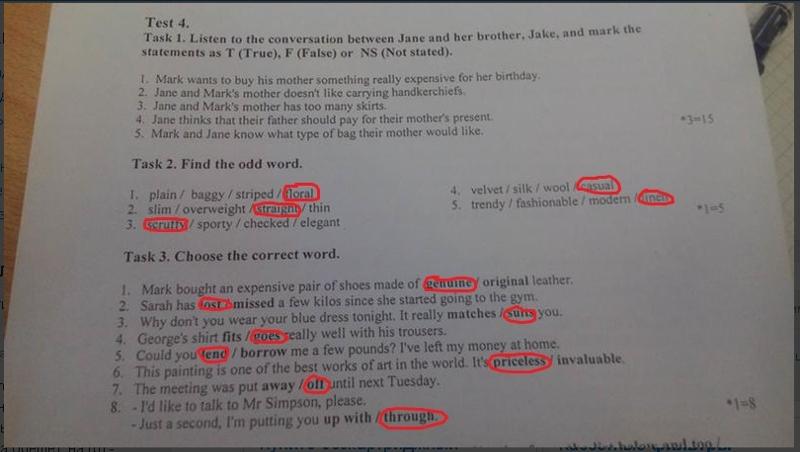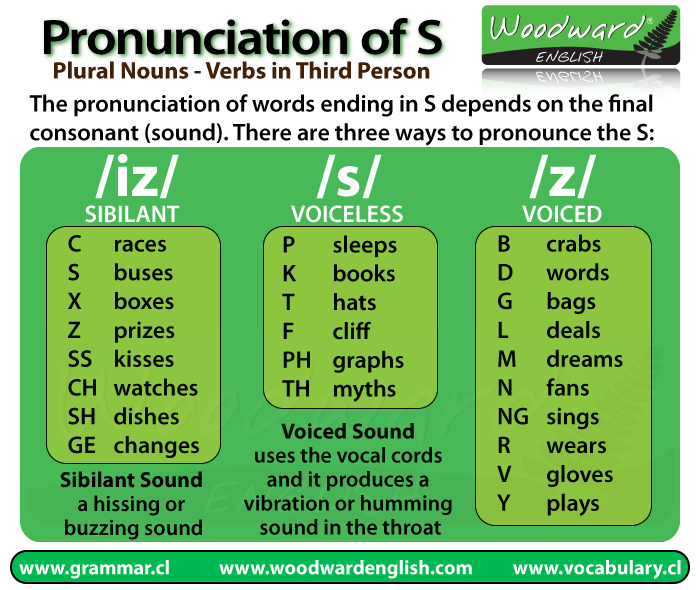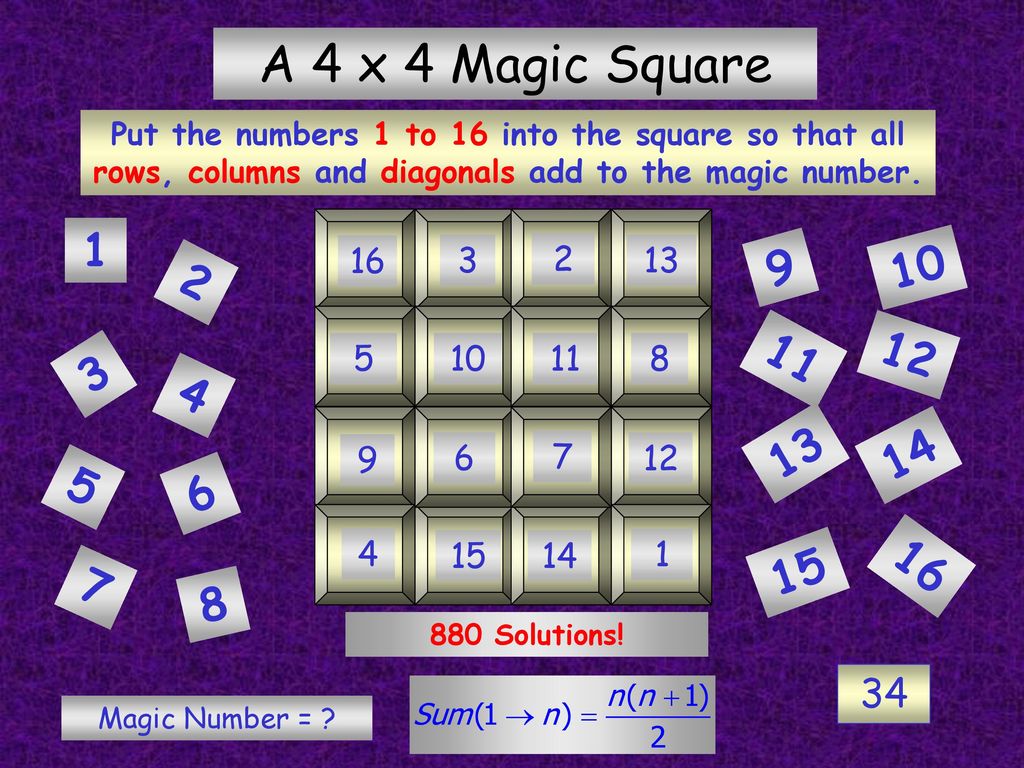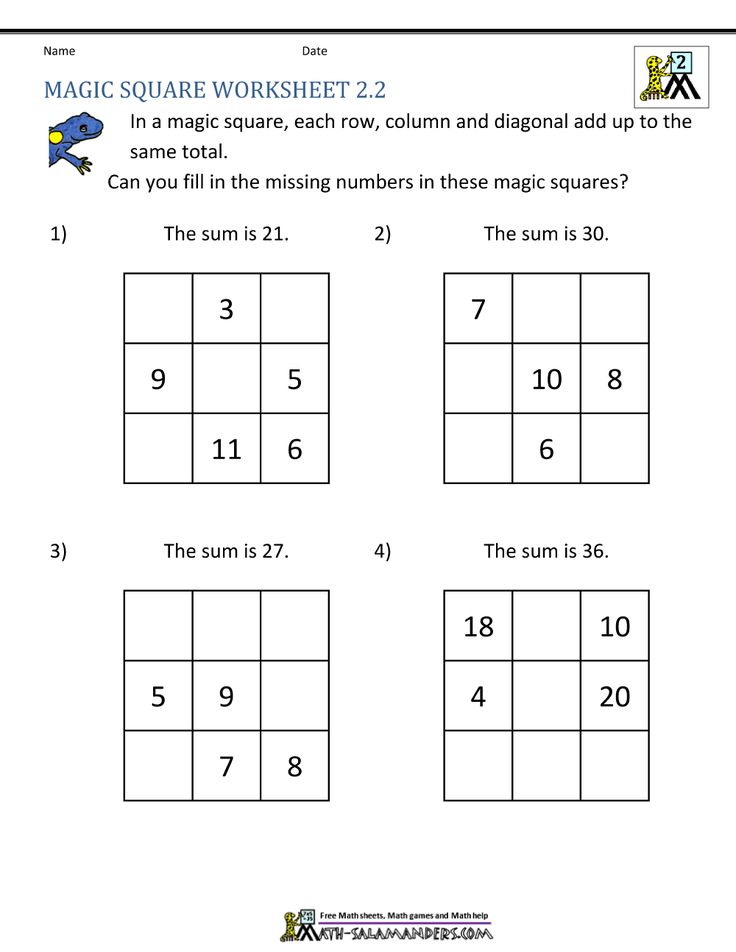3S the magic number
Alive With Ideas - Blog
Here’s a fun game. Next time you’re out and about, pay attention to the messages that assail you through advertisements, slogans or headlines as you’re going about your day. How many of them use groups of three words or phrases?
If you’ve been in communications for any length of time you’ve no doubt come across the rule of three. But how much do you use it? And why is it so powerful?
For the uninitiated, the rule of three suggests that words grouped into threes are more appealing and easier to remember. Our brains are pattern-seeking machines, constantly looking for relationships and meaning in the world around us. Three is the smallest number we need to create a pattern, the perfect combination of brevity and rhythm.
It’s a principle captured neatly in the Latin phrase omne trium perfectum: everything that comes in threes is perfect, or, every set of three is complete.
Research gives further evidence on why three is the magic number. One recent study found that in advertisements, speeches and other messages designed to have a persuasive effect, three claims will persuade, but four or more will trigger scepticism – and may even reverse an initially positive impression.
The rule of three also governs how we talk to each other in daily conversation. According to speechwriter Max Atkinson, author of Lend Me Your Ears, studies show that listeners will wait for a speaker to find a third item in a list before taking their turn to speak. But if they go beyond three to a fourth item, the speaker will usually get interrupted. The third item marks a sense of completeness, and we have an ingrained tendency to wait for it.
We can use the rule of three to powerful effect. Its simplicity also makes it ideal advice to help leaders and managers improve their own communications. Here are three ways to put it into practice.
Create powerful messages
Browse any famous speech on YouTube and you’re likely to find liberal use of groups of three.
US President Barack Obama is a great example. Not only was his campaign slogan ‘Yes We Can’ composed of three words, but his speeches are peppered with groups of three. In his famous 2008 Presidential acceptance speech he used groups of three at least 12 times. They were part of what gave his speeches such a lyrical quality. And they can be just as effective in writing.
Try these techniques from Max Atkinson for incorporating groups of three into your work:
- Use three identical words – as in Tony Blair’s famous use of ‘Education, education and education’ to set out his top three priorities for Government.
- Use three different words – such as ‘Friends, Romans, Countrymen’ from William Shakespeare’s Julius Caesar.
- Use three phrases – as in Abraham Lincoln’s ‘Government of the people by the people for the people’.
- Use three sentences – as demonstrated by Winston Churchill’s historic description of the Battle of Britain: ‘This is not the end.
 It is not even the beginning of the end. But it is, perhaps, the end of the beginning.’
It is not even the beginning of the end. But it is, perhaps, the end of the beginning.’ - Put the longest item last – as in ‘the inalienable right to life, liberty and the pursuit of happiness’, from the American Declaration of Independence.
Make your campaigns memorable
Communication campaigns are worthless unless people remember them: they just create more noise.
Research shows that our brains can comfortably process up to three ‘chunks’ of information in our short-term memory. Above that, they need to work much harder. This insight can help us devise campaign names and materials that have a far higher chance of being remembered.
For example, ‘A Mars a day helps you work, rest and play’ fuelled over 30 years of market-topping sales of the ubiquitous chocolate bar.
‘Stop, Look and Listen’ helped millions of children cross the road safely, while ‘Slip-Slop-Slap’ persuaded a generation of Australians to guard against skin cancer. Both these safety campaigns succeeded because they were easy to remember, and easy to follow.
Another challenge for communicators is helping employees understand their organisation’s purpose, objectives or strategy.
Unfortunately, business strategy and plans are rarely produced in communication-ready format. It’s often up to us to translate them for the wider business, and the rule of three can help here too. Grouping business priorities into three areas for communication purposes not only increases recall, it also forces you – and your organisation – to prioritise.
After all, as management guru Jim Collins wrote: ‘If you have more than three priorities, you don’t have any’.
Focus your presentations
Many business presentations are ineffective because they’re rambling and unfocused. That’s why communication and pitch experts suggest using a three-part structure for presentations. It’s one of the easiest and most effective ways of structuring your message.
In Talk Like Ted, communications expert Carmine Gallo recommends creating a message map on a single piece of paper to plan any pitch or presentation. It consists of three steps:
It consists of three steps:
- First, create a simple headline for your presentation: the single most important thing you want your audience to know about your product, service or idea.
- Next, write three key messages that support your overall theme. If you have more, use three categories instead.
- Finally, create three supporting points for each of your messages, using a combination of stories, statistics, examples or anecdotes.
Using this framework can help you communicate more effectively in almost any scenario – from elevator pitches to meetings to full presentations. It’s also simple and effective advice to give leaders and managers when supporting them in developing their own communication material.
The rule of three takes advantage of our inherent nature to produce communications that are simple, appealing and effective. Whatever our communication aims, it can sprinkle a little stardust on our efforts and increase our chances of success.
Three really is the magic number.
By Dave Wraith for Alive!
Three is the Magic Number
Three is the Magic Number
Three is the Magic Number Zach is helping his mother plan his ninth birthday party for Saturday. He is inviting 9 of his best buddies. Zach tells his mother that his friends love pepperoni pizza. His mother decides to order enough pizza for each boy, including Zach, to eat 3 pieces of pizza each. Can you help Zach and his mother figure out how many pieces they will eat in all? |
First you will need to skip count by threes to find out how many
pieces of pizza will be eaten by a total of 10 children. Click on each box and fill in
with the number that goes there. Click on each box and fill in
with the number that goes there. Hint: Remember, you are counting by sets of three. If you get stuck, just add three to the previous number to get your answer. When you get the correct answer, the kids get pizza! |
|
|||||||||||||||||||||||||||||||||||||||||||||||||||||||||||||||||||
| Now let's practice!!! Fill in the missing
numbers by skip counting by threes. |
|
|||||||||||||||||||||||||||||
|
Now we can help Zach's mother find out how many slices of pizza will be
eaten in all. Remember, there are ten children eating three pieces of pizza each.
|
Click on the numbers to count them out. The numbers should be in order of threes. |
| Look around your home or classroom. Find 30 beans, 30 pennies, 30 marbles, or 30 of any small object. Put them in groups of three. How many groups do you have? If you make 10 groups with three in each group, how many in all? |
|
Magic squares
The topic of mathematical squares is one of the traditional sections of entertaining mathematics, presenting to the inquisitive reader both beautiful constructions and serious unsolved problems.
Let's start with the classical problem of constructing a minimal magic square.
Task
Arrange the numbers from 1 to 9 in the cells of a 3x3 square so that the sums of triples of numbers in all verticals, horizontals and diagonals are equal. nine0003
Suppose we arranged nine numbers according to the required conditions:
| a | b | c |
| d | e | f |
| g | h | i |
Then the sums a+b+c = d+e+f = g+h+i = a+d+g = b+e+h = c+f+i = a+e+i = c+e+g = S. The number S is called the magic square constant. To find it, note that 3S= a+b+c + d+e+f + g+h+i = 1+2+3+4+5+6+7+8+9=45. Hence S=15.
To find it, note that 3S= a+b+c + d+e+f + g+h+i = 1+2+3+4+5+6+7+8+9=45. Hence S=15.
Let's find the central element, e. To do this, consider four sums: the central vertical and horizontal and both diagonals. 4S = a+e+i + b+e+h + c+e+g + d+e+f = 3S+3e. Hence e=S/3=5.
Before reducing the number of unknowns, let's make one more observation. Let's add a horizontal, a vertical and a diagonal coming out of one corner. nine0009 3S = a+b+c + a+e+i + a+d+g = a+b+c + d+e+f + g+h+i + = 3S + 2c-d-h
So the sum of d+ h is an even number. It turns out that all the numbers in the corner are of the same parity and different from all the numbers on the sides. Because in sum, there are two corner numbers and one side number horizontally, and the sum itself is equal to an odd number, 15, then there are even numbers on the corners, and odd numbers on the sides.
Now we exclude unknowns:
| a | nine0015 c | |
| d | 5 | 10d |
| 10-c | 10-b | 10-a |
We could also remove the variable d using the equation a+b+c = a+d+10-c, so d=2c+b-10, and also express c as 15-a-b, but skip this step and immediately move on to filling in numbers. nine0003
nine0003
Filling the corners with even numbers up to flips and reflections will be unique. We put a deuce somewhere, automatically in the opposite corner there will be 8. The remaining pair of corners is occupied by the numbers 4 and 6:
| 2 | b | 4 |
| d | 5 | 10d | nine0027
| 6 | 10-b | 8 |
Now the odd numbers on the sides are uniquely set:
| 2 | 9 | 4 |
| 7 | 5 | 3 | nine0027
| 6 | 1 | 8 |
So, we got the simplest and oldest magic square known to mankind. According to Chinese tradition, it was inscribed on the shell of a sacred tortoise.
According to Chinese tradition, it was inscribed on the shell of a sacred tortoise.
In addition to consecutive natural numbers, of particular interest is the arrangement of prime numbers, squares, cubes, etc. in the cells of the magic square. And the researcher Natalia Makarova, in the topic of magic squares at the scientific forum, presents her results and invites to search for squares consisting of consecutive Smith numbers . nine0003
Smith numbers are a separate curious phenomenon. For these numbers, the sum of the digits is the same as the sum of the digits of all their prime divisors. For example,
2888=2*2*2*19*19
2+8+8+8=2+2+2+1+9+1+9
Max Alekseev found the minimum 3x3 square from consecutive Smith numbers
| 84138954584 | 84138954498 | 84138954532 |
| 84138954486 | 84138954538 | 84138954590 |
| 84138954544 | 84138954578 | 84138954492 |
As Natalia herself says:
The complexity of this task was that for its solution it was necessary to generate very large Smith numbers.
nine0002 Now the squares of orders 4 - 5, 7 - 9 from consecutive Smith numbers are not built; and from arbitrary - only squares of orders 7 - 9 remained to be built.
Well, of course, not counting the squares of large orders. Squares from successive Smiths are built up to order 50, and squares from arbitrary - up to order 35. You can continue the construction further, for the next orders.
Squares of large orders are built according to the unique programs of Stefano Tognon (Italy), which, alas, do not work for small orders. nine0003
Now in the sequence A170928 of the minimum constants of magic squares, consisting of Smith numbers, there are three questions, just for unconstructed magic squares of orders 7 - 9. Anyone who can construct such a square will be its author and get into the OEIS encyclopedia with his square. In my opinion, this is a good incentive to solve the problem :)
So the problem is open and you can say a new word and write your name in the study of magic squares. nine0003
Good luck!!!
P.S. On February 19, a participant 12d3 from the scientific forum dxdy.ru found , and svb confirmed the correctness of calculating the magic square from Smith numbers of the fifth order.
| 1743898107 | 1743898095 | 1743898425 | 1743898281 | 1743898414 | nine0027
| 1743898144 | 1743898450 | 1743898341 | 1743898256 | 1743898131 |
| 1743898371 | 1743898155 | 1743898226 | 1743898268 | 1743898302 |
| 1743898440 | 1743898166 | 1743898168 | 1743898306 | 1743898242 |
| 1743898260 | 1743898456 | 1743898162 | 1743898211 | 1743898233 |
Research is ongoing.
Ask a question on the math blog
TOYOTA 3S-FSE D4 damper adjustment
Given that there is little information on adjusting the electronic damper of 3S-FSE motors, and also, based on the material kindly provided by Anton (12 volt ) , and Vladimir Petrovich, based on the practice of adjustment, we can offer (in my opinion) one more option.
Both articles provide adjustment options for one motor model, but, as you know, it was produced in several modifications depending on the model of the car and on the year of manufacture. In other words, for example, the parameters of the first article (given the high accuracy of manufacturing nodes) are more suitable for real life. “Counting the threads” is not necessary - it is enough to measure the exit of the screws above the plane with a barbell. It is accurate and fast, and most importantly - suitable for repairs. In real life, time is also of the essence. nine0003
In the second article, there is a more painstaking adjustment using a scanner and a voltmeter with folk values like 0. 669mV and the like, which can only be set with “true hands” by ear and by smell. Moreover, the result was achieved - but at what cost - the whole day. Repeating it is much more difficult than Anton's practical version.
669mV and the like, which can only be set with “true hands” by ear and by smell. Moreover, the result was achieved - but at what cost - the whole day. Repeating it is much more difficult than Anton's practical version.
What to do if the scent fails, and the hands cannot get into 0.669 mV, and strives for 0.7 V, whatever one may say. An attempt to study how it all spins there - spins, as well as magic numbers with three signs, which did not let you sleep, prompted the thought - it can’t be! nine0009 Well, it cannot be that this automatic control system (ACS) does not work (albeit conditionally) at a voltage of 0.7 volts.
As far as we know, in any feedback system there is a stability factor , in other words, a corridor (hysteresis loop) , in which the parameters are considered unchanged. The system does not pass from one state to another by chance - otherwise there is a resonance (breaking the control loop) or going to extreme values.
A simple example is a relay. The pick-up voltage is higher than the drop-out voltage. This is how a hysteresis loop is formed, in the zone of which nothing happens. Therefore the system is stable. Otherwise, we would get a constant "bounce of contacts". A similar thing is implemented in electronics, for example, logic circuits - this is the level of signals. Gradually getting over to the car, we see it on the example of TOYOTA in the signal on the automatic transmission. If TPS is an analog device, linear and continuous, then the signal for automatic transmission should not have such a shape, otherwise the switching thresholds will be without a hysteresis loop, and it would be possible to achieve constant gear shifting from one to another and back to infinity at a certain speed. From the shape of this signal, you can see that the voltage changes in increments, or steps. The voltage of one step is the hysteresis loop for each level. In the zone of this step, it is considered unchanged. nine0009
The pick-up voltage is higher than the drop-out voltage. This is how a hysteresis loop is formed, in the zone of which nothing happens. Therefore the system is stable. Otherwise, we would get a constant "bounce of contacts". A similar thing is implemented in electronics, for example, logic circuits - this is the level of signals. Gradually getting over to the car, we see it on the example of TOYOTA in the signal on the automatic transmission. If TPS is an analog device, linear and continuous, then the signal for automatic transmission should not have such a shape, otherwise the switching thresholds will be without a hysteresis loop, and it would be possible to achieve constant gear shifting from one to another and back to infinity at a certain speed. From the shape of this signal, you can see that the voltage changes in increments, or steps. The voltage of one step is the hysteresis loop for each level. In the zone of this step, it is considered unchanged. nine0009
An example of a TT signal (automatic transmission) digitized by an ECU with TPS:
photo 1
And if we draw linesconnecting the steps from the top and bottom, we get a corridor. This is the principle of operation of all digital-to-analog converters (judging by the number of quantization levels), there is a 4-bit ADC with combinations
This is the principle of operation of all digital-to-analog converters (judging by the number of quantization levels), there is a 4-bit ADC with combinations
0000 , 0001 , 0010 ...... to 1111 bus states . It is possible that the 3S-FSE damper has an ADC with a higher bit depth (accuracy), but in any case, the principle is the same. nine0009
Based on this, we can conclude (and it is confirmed) - there is a "corridor" in the TPS adjustment, the motor will work not only at a VTA voltage of 0.669 V, but also at 0.7 V too. To be precise, the corridor is much larger.
The second reason for the search is what to do if there is no scanner, or it does not “read” the date, then such a setting is not applicable at all.
Third - what to do if different models and parameters of one are in no way suitable for another?
To begin with, we will limit the circle of searches and input variables in the form of unknown values.
Namely - let's call the nodes a little differently.
Due to the fact that APPS (pedal position sensor) is not subject to adjustment, we exclude it immediately for clarity. Whatever model arrives - in any case, it is as it is, to twist - there is nothing to turn there, except for one thing: check the smoothness of the increase in voltage for breaks in the current-carrying tracks with a pointer voltmeter. nine0003
Throttle stop screw, has an absolutely similar purpose with any other stop screw of any other valve, including carburetor. Its only purpose is to limit the stroke of the damper to full closure without wedging in the body.
photo 2
As we can see from the design - when the damper is closed to the stop (we press it with a finger), the damper should not wedge in the throttle body, and when closed completely, rest against this screw with a limiter. nine0009
Adjustment method -
- close the damper manually by pushing it with your finger after unscrewing the stop screw
- We begin to screw in this screw before the damper opens.
- Check for wedging.
- Tighten the locknut. Everything - you can paint over the thread with a marker.
This can also be done on the car without removing the throttle body, if the damper is hot (motor running) it is better to push it with a wooden pencil so as not to burn your hands and not damage the aluminum body.
TPS - the main difficulties with it. To begin with, we fix the TPS strictly in the middle of its adjusting grooves. We connect the connector to it and watch the voltage. nine0003
At pin 1 (top) - 5 volts. 12 volts can't be there.
Second from the top (VTA) - limited to one channel (they are synchronous)
We look at the VTA voltage with a simple multimeter at the limit of 20 volts (two decimal places are better perceived than three :)
The voltage may be different, but in any case - it is close to the reference - since on a working car all the adjustments are somewhere in the middle. For accuracy and repeatability of the result (required !!!), the VTA voltage should be checked with the damper pressed and the drive motor turned off. nine0003
For accuracy and repeatability of the result (required !!!), the VTA voltage should be checked with the damper pressed and the drive motor turned off. nine0003
Algorithm:
- Connect the APPS and TPS connectors, the TPS connector on the drive motor is disconnected.
- Turn on the ignition
- press the damper with your finger and watch the VTA voltage
TPS is also checked for broken tracks like APPS before.
Let's say you saw 0.63 V - put 0.6 by turning TPS
Some shutter showed 0.52 - put 0.5, and the third 0.46 V, put 0.45 - the closest before rounding. It will work at 0.46, and even at 0.4 V, but at 0.35 there will be an error. nine0003
Therefore, it is important to first accurately adjust the full closing of the damper with the stop screw, and then set the TPS to the middle position - this way you will find almost exactly and immediately the middle of the ATS hysteresis loop. Fix TPS.
I recommend pressing the shutter and taking VTA readings for absolute stability of the results (and their predictability), otherwise the next participant interferes in the measurement process (below in the text) - and these are already two unknown quantities, which is completely confusing and makes some owners twist everything in a row, including all screws and TPS at once, and this only leads to negative results, although "a negative result is also a result"? nine0003
Only one screw left
You can call it differently - for example, a non-thrust throttle valve screw (it does not rest against it in any way).
photo 3
And, for example, the screw of the initial throttle opening angle. This screw presses on the spring assembly, which forms the initial opening angle of the damper. It is not affiliated with APPS in any way. The initial opening angle is when the damper is ajar with the ignition off or the connector removed from the drive motor. This angle is maintained when the engine is idling. Through five-minute experiments, it was found that the accuracy of setting this angle also affects the level of warm-up revolutions. We control this parameter using the same VTA with the servomotor turned off and without pressing the damper to the closed state. nine0009
Algorithm:
- APPS and TPS connectors connected, servomotor disconnected
- turn on the ignition
- connect the same voltmeter to the same VTA connector (or it is already connected)
- we twist or unscrew the screw of the initial angle of the damper to obtain the difference VTA-C (the damper is free) and VTA-Z (the damper is pressed - closed) 0. 1-0.15 volts.
1-0.15 volts.
Example - VTA-C 0.5V, VTA-C 0.65V, or VTA-C 0.6V, VTA-C 0.75V, etc. nine0003
How exactly you “hit” the range - make sure after warming up the engine and setting 650 rpm by VTA voltage - it should be close to VTA-C
Reset the ECU and start the engine, after warming up, look at the speed.
Let's say you set the VTA-CVTA-3 difference to a smaller one, everything will work, and the transition to compressionon lean will be, but the engine will only start when hot. In the morning you will have to press the gas pedal to start.
How to check the accuracy of your adjustments if there is no scanner - again, a voltmeter with two decimal places can solve this issue. nine0003
Warm up the motor and compare on XX the VTA readings on the running motor and muffled, with the drive motor turned off. When finely tuned, they are close or the same with a difference of 0.02 V
Stop the engine and remove the connector from the temperature sensor on the ECU, connect a 2. 2 kΩ resistor to the connector (this is about 20 degrees). Start - check the “warm-up” speed 1500 - 1700 rpm (on a hot engine). If this is a lot for you, then by reducing the difference and resetting the ECU, you can slightly reduce the warm-up speed - like the “WINTER-SUMMER” mode on carburetors with thermal heating in the starting system. nine0003
2 kΩ resistor to the connector (this is about 20 degrees). Start - check the “warm-up” speed 1500 - 1700 rpm (on a hot engine). If this is a lot for you, then by reducing the difference and resetting the ECU, you can slightly reduce the warm-up speed - like the “WINTER-SUMMER” mode on carburetors with thermal heating in the starting system. nine0003
But this is already an experiment in which you can “achieve” a check engine
You can determine if the engine goes into COMPLEAN by the signal OX1 / VF1 in the diagnostic connector under the hood, using a vacuum gauge or scanner (if any)
PRACTICAL ADJUSTMENT OPTIONS
- CORONA PREMIO 96 g (apparently one of the first) with such a pump, the diagnostic connector is only under the hood, there are no errors in self-diagnosis (E1-TE1) next to it is a “diagnostic scanner” in the form of a wire jumper. nine0565
photo 4
Will not start in any way, except for fuel supply to the inlet from the syringe. All the screws on the electronic damper are unscrewed (as well as on the motor), the high-pressure fuel pump is new, in the engine compartment, it seems that "a thermonuclear explosion has occurred." J
All the screws on the electronic damper are unscrewed (as well as on the motor), the high-pressure fuel pump is new, in the engine compartment, it seems that "a thermonuclear explosion has occurred." J
According to the owner - does not start after replacing the injection pump.
We look at the signals on the injectors (100 volt amplifier under the driver's seat)
photo 5
There are pulses with an amplitude of 100 volts, but the duration when scrolling with the starter leaves much to be desired (less than 2 ms) This is clearly not enough to start the motor. The casings were all removed a long time ago and, by the way, in an original way - for those who change the timing belts on such engines and are tired of the far bolt of the plastic cover casing, as well as the fact that you can’t remove it without dismantling the engine support cushion along with the bracket - it wasn’t there !!! nine0003
Craftsmen have completed this knot !! - see photo:
photo 6
Now to check the timing marks, you need to do just three simple steps J
But such a “tuning” of the air filter is not necessary, but as an option for “turretless racers” - how to make a “zero” out of a stock filter ??
The answer is simple - take a drain, pour gasoline on it and set it on fire until holes appear in places - "nulevik is ready".
The main thing is to extinguish in time, otherwise you can spoil L
photo 7
We get to the ECU, it is quite conveniently located and we look at the signal at the output of the fuel pressure sensor in the rail. (High pressure)
photo 8
This is a pink wire. The voltage on it is 5 volts when it is on, five volts when scrolling - in general it is faulty.
In the literature of the Legion-Avtodata Publishing House, little is written about how to check it. nine0009 And in general, even in the "manuals" this question is somehow "quietly bypassed" ...
It is written that when voltage is applied to the sensor, its output should have zero voltage. But it is not a validation method for the circuits implemented in it.
Obviously, the sensor itself contains a measuring element that converts pressure into voltage, as well as an end stage made according to the OK scheme (open collector - or common emitter scheme)
photo 9
5 volt power supply, signal ground and output all in three pin sensor connector.
Naturally, it will not be possible to simply check the sensor with removal - firstly, it is necessary to generate pressure, secondly - to apply power and thirdly - to form a load for the circuit with OK (such a cascade does not generate voltage by itself)
Then the ECU input amplifier circuit should look like this, where R1 is the load for the inverting amplifier VT1 and also the reference voltage divider for OY1
photo 10
Then, when power is applied through the resistor R1, a current begins to flow through the circuit power supply 5V
(internal voltage ECU, R1, R2 - common.)
the input impedance of the amplifier is very large, then the flowing current OY can be neglected). In normal operation, this bias goes to the collector of the transistor of the output stage of the sensor VT1, and the transistor, opening, shunts the resistor R2, thereby lowering the voltage at the input OY. The maximum voltage of 5 V at the input OY1 corresponds to the maximum pressure in the fuel line. At the same time, the ECU closes the nozzles so much that it is not possible to start the engine (based on pressure), but the actual pressure is much lower. Considering that the pressure sensor is not something to remove, it’s not easy to see, to check, we cut the wire (signal from the sensor) and we ground through the tuning resistor, turn on the ignition and set the resistor to 2.2-2.5 volts - start the engine - it starts and runs at warm-up speed. nine0003
At the same time, the ECU closes the nozzles so much that it is not possible to start the engine (based on pressure), but the actual pressure is much lower. Considering that the pressure sensor is not something to remove, it’s not easy to see, to check, we cut the wire (signal from the sensor) and we ground through the tuning resistor, turn on the ignition and set the resistor to 2.2-2.5 volts - start the engine - it starts and runs at warm-up speed. nine0003
For the final check, you will have to remove the connector from the sensor and check the voltage on it, and especially the signal wire. If everything is normal, change the sensor. In this case, the problem was in the sealing rubber of the connector - it did not allow the connector to be snapped onto the sensor (do not apply much force due to limited space)
After that, adjust the ETCS
Parameters VTA (Z) 0.5 VVTA (C) 0.65V, after warming up in STICH, the damper “tends” to 0.63 V, goes into ULCM. nine0009 On such a model with DLC1 under the hood, it is easy to check the operation in Ultra Lean Combust Mode with a voltmeter on the VF1 contact
But for CORONA PREMIO 2000 with this type of pump:
photo 11
After all the ETCS settings, I had to additionally adapt the damper using a jumper (or a scanner in the ete1 mode)
We managed to connect a scanner to this model (DLC3) and check the THPS readings - 15. 8% (according to the manual, it should be in the range of 14.6 - 16.0%)
8% (according to the manual, it should be in the range of 14.6 - 16.0%)
Some differences
The error occurred after the ignition was turned on or the internal combustion engine was running after 10-15 seconds.
We erase the error on a running engine, turn off the engine.
Turn on the ignition and while the damper is working, press the gas pedal all the way.
We close the contacts in the DLC3 diagnostic connector - check flashes, wait a couple of seconds.
Release the gas pedal - smoothly ...
Turn off the ignition
Pull out the jumper
We wait 10 seconds, we start, we look at the work of the internal combustion engine on the scanner
If the adjustment is accurately made, then the damper opening angle (according to the scanner) in STICH is about 15 degrees, and the VTA voltage is close to the set VTA (C)
It does not interfere with checking the start for “cold” by connecting a 2.2 kOhm resistor to the ECU temperature sensor connector, since it takes a long time to wait for natural cooling of the internal combustion engine in the summer, but you need to make sure that ETCS is working now.

 Skip
count by three to find out how many slices in all.
Skip
count by three to find out how many slices in all.









